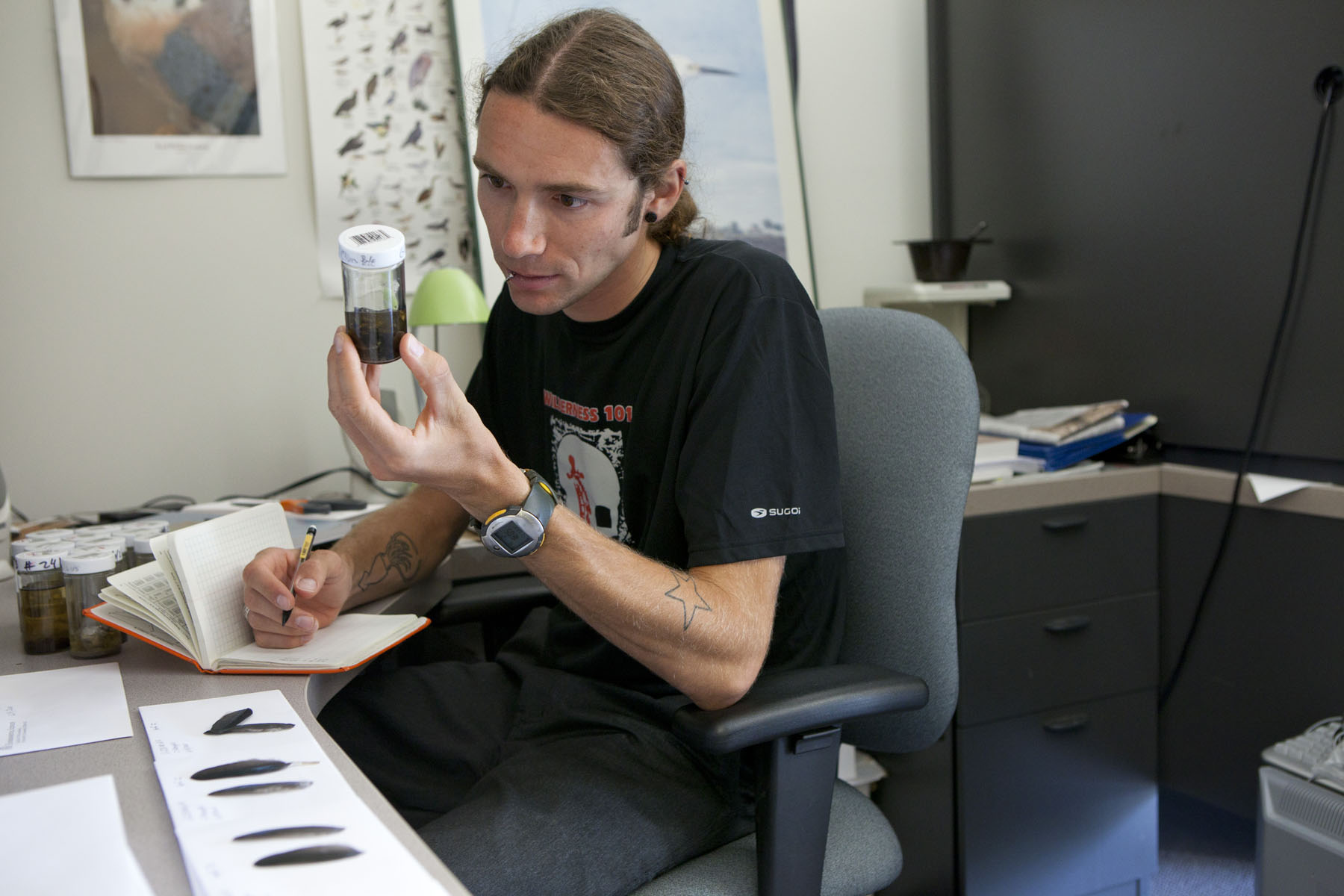September 9, 2010 — When Charles Clarkson finishes a day's work in the field, he commonly is covered with vomit. In fact, he collects it. "Regurgitates," he politely calls his rather extensive collection of bird upchuck.
Clarkson is a University of Virginia Ph.D. candidate in environmental sciences who is conducting a comparative study of bird populations on Virginia's Eastern Shore and in New York Harbor.
He collects vomit and bird feathers from nestlings as a way to compare the diets of birds from each location and to see how the local environments affect nutritional intake, and ultimately, the overall health of bird populations. The samples also serve as a means for assessing the quality of the environments in which the birds live.
Clarkson chose the two study sites because they represent extreme opposites in environmental quality. The Eastern Shore site is in a nearly pristine area that has been protected by the Nature Conservancy for 40 years. The New York Harbor site, by contrast, is heavily polluted and adjacent to the activities of an enormous human population.
"There's heavy boat traffic at the mouth of the Hudson River, which is notorious for high-level contaminates, such as mercury," Clarkson said. "This allows a good comparative study between two vastly different locations that support the same species of birds."
Clarkson is focusing on two bird species, the glossy ibis and the double-crested cormorant. These birds represent both ends of the feeding spectrum of a range of shorebird species.
"The glossy ibis is a habitat-use specialist that probes for food in the mud, while the double-crested cormorant is a habitat-use generalist, a species that can be found in fresh, brackish or salt water and consumes a wide variety of fish species," Clarkson said.
When he enters a nesting site, the nestlings vomit as a defense mechanism.
"It makes my job easy because I can go into a colony, pick up the nestlings and they will regurgitate into a bag for me," he said.
He also collects a feather from each bird, and then takes the samples back to a lab for analysis. From the stomach content, he can determine which species of fish were consumed and the diversity and apparent abundance of those species, and he can assess the mercury levels in those foods and, therefore, the birds' diets.
"I can tell a lot about the environments in which they live and, likewise, the overall health of the overall environments in which we all live," he said. "I also can analyze feathers and determine if these feathers are growing normally or at a slower rate and if they're denuded. I can correlate that with the diet the bird is getting, and the contaminate load that the bird is getting as well.
"Initial indications seem to be that the feather growth bars are wider in Virginia birds than New York birds, which likely means better nutritional conditions on the Eastern Shore, whether from dietary abundance or quality," Clarkson said. "The New York birds have narrower growth bars, likely as a result of some deficiency in diet." A growth bar is a part of the feather that develops within a 24-hour period and is a good indicator of nutritional intake during that time period.
Likewise, New York birds are developing more "fault bars" – thin patches in their feathers that indicate a variety of stresses, such as predation or disturbances from human activity.
"Fault bars mean that nestlings are devoting more of their energy resources to immuno-suppression than to feather growth," Clarkson said. "So the feather has less actual substance to it."
This means the birds must use more energy and effort to fly and maintain warmth, making them susceptible to diseases and predators.
"The overall implications of the research are that we can start to answer questions about local habitat health by a simple measure of how a feather is developing as related to diet, rather than just the traditional method of population surveys," Clarkson said. "This allows us to isolate the sources of insult that bird species are facing. I'm hoping the study will broaden our horizons in terms of the tools that are at our disposal for conservation and assessing overall environmental health."
Media Contact
Article Information
September 9, 2010
/content/bird-vomit-feathers-serve-environmental-indicators

